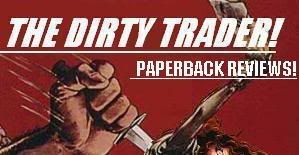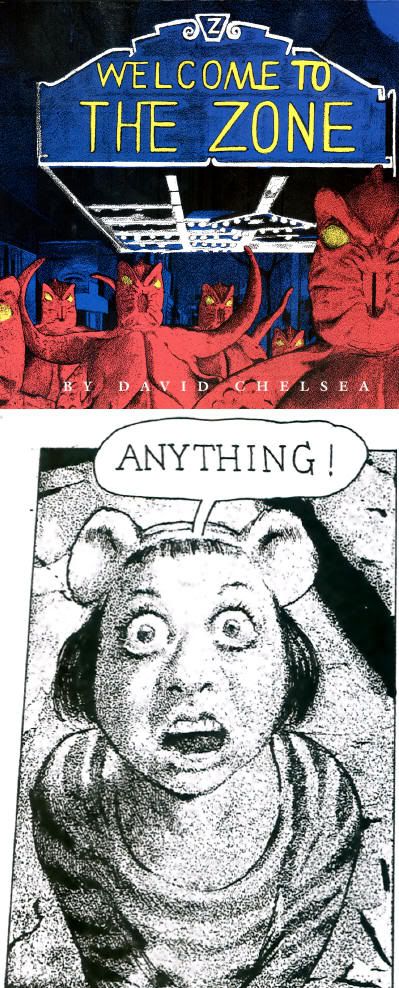


I was introduced to the Golden Age of Super-Heroes by a magazine article I read as a boy about how much more weird, daring and dark obscure characters like Daredevil, the Flame and their ilk were than the corporate branded types I was familiar with in the tail end of the Bronze Age. I wondered what became of that lot until I began frequenting comics shops in the early '90s, and turned up some of Bill Black's reprints at AC. Then Malibu tried to ride the coattails of their early publishing deal with Image by offering their own line of super-heroes based around a revival of old Centaur characters as
The Protectors, which I followed for a time. I was put out by the great Jerry Bingham redesigns floating around in trade publications being interpreted by a rather green Thomas Derenick and lesser lights. Later still, I came to learn all of those characters and many more had lapsed into the public domain, available for use by anybody, although virtually nobody bothered. I thought that was both a shame and an opportunity, because they represented a ready made universe of characters with its own legitimate history that
I would love to exploit my own self someday.
Unfortunately, both Nick Barrucci of Dynamic Forces and Erik Larson of Image decided at about the same time to
steal my entirely unique idea for themselves! Sarcasm aside, I was very happy with the results. Larson oversaw
The Next Issue Project, which added an issue to the numbering of several 1940s anthology titles by modern creators. The results were rather uneven, not only creatively, but in terms of an unreliable publication schedule that saw an issue released only once every few years (after long shipping delays on each.) As for Barrucci, well, we were all bowled over by the prospect of a painted Alex Ross project, especially after seeing his glorious first promotional piece. Then we learned he would once again be joined by co-plotter/scripter Jim Krueger, responsible for the interminable
Earth X and painfully stupid
Justice. At least
JSA artist Stephen Sadowski would be on board, except only for part of a zero issue.
Project Superpowers made sure to acquaint the reading public with Barrucci's now standard bait & switch method of operation. With the shamelessness that led to variant covers that simply processed the art on variant covers through basic image inversion filters, the final creative team was Krueger with unpolished unknown artist Carlos Paul. My plot to capitalize on those public domain characters remains safe, although not necessarily sound, with crap like this polluting the brand.
The main creative purpose of the project seems to be to serve as a ham-fisted criticism of the Bush Administration in its last year. The main commercial consideration would be to secure trademarks on a "minimal assembly required" super-hero line. It fails creatively because by 2008 everybody was already sick of Bush, and the conversation soon changed from the ethics of a war on terror to the economy. It fails commercially because beyond its immediately dated politics, the characters have no point of view or individual identities.
From its most basic premise, the use of Pandora's Box as a place where all super-heroes were stored from their Golden Age heyday until the present, the whole line is shot to hell. One modestly powered and clearly deluded super-hero managed to best every other one over the span of a few years. See, Marvel's heroes mostly retired after World War II, with Captain America and the Sub-Mariner mothballed individually by their major enemies in separate instances until their Silver Age revivals. The DC heroes were forced into inactivity by the House Committee on Un-American Activities, a real world bunch of bad guys, before being replaced by a whole new generation of more powerful super-heroes. The Dynamite characters however were all too stupid and weak to figure out one known kook amongst their number was taking them out one by one. Further, they sat around in limbo for sixty years before that same kook managed to release them with minimal difficulty. By comparison, the Justice Society of America were trapped in a repeating Ragnarok cycle from the late eighties to early nineties before teaming up with other heroes to secure their release. The Watchmen, a bunch of Charlton retreads, figured out the killer in their midst within days of a single murder, plus tell several complete stories in twelve issues. Right off the bat, all the Dynamite heroes are ineffectual pussies.
The second major problem, related to the first, is that the entire Superpowers line-up is Captain America. Every single one of them is a patriot who fought in the great war before disappearing for decades to reappear in a time unlike their own. They all have pre-war educations, unimpressive power sets, and silly costumes. Most importantly, they were the models from which scores of other heroes who have since evolved over time were derived. That makes them walking cliches, and all of a singular type. One method to overcome that sameness would be to embrace their retroactive natures to contrast their views on race, gender, nationalism, and so forth. Unfortunately, for the purposes of the story, they're all relatively mild-mannered Roosevelt democrats at odds with an oppressive government whose main crime seems to be some suppression of the media and war profiteering. As Big Brothers go, I'd take them over
V For Vendetta's U.K. in a heartbeat.
The third major problem is an extension of the second, a lack of interesting characters in compelling circumstances. The fact is, hardly anyone has read about these characters in detail who isn't collecting social security, and because the creators felt the need to introduce dozens of them at once, there really isn't time to get to know anyone. Previous Ross/Krueger projects relied on familiar characters readers had an established relationship with, so that there was still emotional resonance amidst the painting of epics with broad strokes. The tribulations of Pyroman just don't touch me on an emotional level without some serious legwork. The only characters given real face time are still cyphers in service to a bland, unimaginative plot. Further, their enemies are reminiscent of the much panned "Burly Brawl" from the second
Matrix movie. When the Superpowers aren't battling a host of identically dressed androids, they're fighting a literal army of Frankenstein Monsters. I can't get involved when I have no investment in either party after a couple of hundred pages of story that fails to reach any real resolution.
Many of my complaints have revolved around the project being too large and ambitious, but I have to stress the issue of incompetence among the responsible parties. I have yet to read a Jim Krueger script that involved me in his characters, or was not filled with gaping plotholes or circumstances in place of a story. The only arc in this first volume is the Fighting Yank finally realizing he was wrong in his actions, and trying to make amends. That arc is completed in the first preview story, but is constantly referenced and dragged out for the entire mini-series without much additional development. None of the other characters even have the start of an arc. They were in the '40s, now they're in the '00s, many of them have slightly altered abilities, and they're on the run from Big Government. That's all we get. The characters seem to be in the early stages of Alzheimer's, suffering from confusion, regressive behavior, and occasional temper tantrums, but still easily directed and kind enough to forget any initiated B- or C-plots until the next volume/spin-off mini-series.
The art by Carlos Paul is serviceable. The storytelling is okay and the layouts are usually clear, but it's all uninspired. I think it's reasonably tight pencils shot and digitally enhanced, but they still look vague and unfinished. Colors by Insight Studio and Debora Carita helps to firm things up, and are somehow evocative of Mark Texeira's painted art, despite the pencils being in no way similar. The art gets progressively looser and rushed, so the colorists have to be credited for the consistency of the volume, such as it is.
The story ends at an awkward point to act as a springboard for a slew of spin-off series, followed by forty-odd pages of preparatory design work. I'm sure Alex Ross had a lot of fun jazzing up these old characters visually, but after
Kingdom Come and
Earth X, even this area seems mired in tropes. The chest emblem as a light source, the hoods/cloaks, turning costume elements metallic, "borrowing" wholesale from other media-- it gets tiresome. Applying one artist's design aesthetic across an entire universe only emphasizes how insular, unimaginative and unnecessary it happens to be.
Project Superpowers is an exercise and an initiative, not a fully realized narrative. It takes dozens of super-heroes from separate companies and treats them all like team members of a low grade '70s Marvel super-team soaked in manufactured melodrama and "relevance."



.jpg)








